The heaviest fish ever caught: an overview
Record-breaking catches through history
Fishing enthusiasts and professionals alike are always fascinated by monumental catches. One of the most iconic records is the heaviest fish ever caught. On April 21, 1959, fisherman Alfred Dean caught a great white shark weighing a staggering 2,664 pounds off the coast of Ceduna, Australia. This incredible catch remains the heaviest fish ever caught on rod and reel. Dean used a combination of skill, strength, and a custom-made tackle to reel in this giant predator.
Giant Mekong catfish in Thailand
When it comes to freshwater giants, the Mekong giant catfish is worth mentioning. In 2005, a giant catfish weighing 646 pounds was caught in Northern Thailand, making it the largest freshwater fish ever recorded. These enormous fish are native to the Mekong River basin and are known for their sheer size and strength. Conservation efforts are crucial for this species as their numbers have been declining rapidly over the years.
Tantalizing tales from the sea
Bluefin tuna also make the list of oceanic giants. Ken Fraser set a world record with his catch of a 1,496-pound bluefin tuna in 1979 off the coast of Nova Scotia, Canada. Bluefin tuna, known for their incredible speed and endurance, are highly prized targets for sportfishing. While they can be difficult to catch due to their power, the adrenaline rush from landing one is unmatched.
Recently, a deep dive into the giants of freshwater fishing sheds light on other impressive catches.
The great white shark: the largest predator
The great white shark: the largest predator
Apex predators of the sea
Few fish can rival the sheer power and presence of the great white shark. Known scientifically as Carcharodon carcharias, the great white is a true titan of the ocean. Setting records both in size and strength, this species is famous for not only its place in popular culture but also its jaw-dropping statistics.
Record-setting catches
Among the most notable records, Australian fisherman Alfred Dean holds a prominent place for catching a monstrous great white shark. In 1959, Dean landed a great white that tipped the scales at 2,664 pounds. This catch was recorded off the coast of Ceduna, Australia, and remains one of the largest fish ever caught by rod and reel.
Notable locations for great white catches
Popular regions where great whites are frequently caught include the coastal waters of Australia, particularly around South Australia. Nova Scotia in Canada, known for its rich marine life, has also seen its share of great white catches. The coast of California, USA, and South Africa's shark alley are other hotspots for these majestic creatures.
Famous anglers and their catches
The pursuit of great white sharks has seen many anglers rise to fame. Alfred Dean remains one of the most celebrated names, but modern-day anglers like Chris Fischer have also gained recognition. Fischer, through his work with OCEARCH, has tagged and released numerous great whites, providing valuable data for marine research.
Fishing techniques for great white sharks
Catching a great white requires expertise, strength, and the right equipment. Anglers often use large, heavy-duty rods and reels combined with robust tackle to withstand the enormous force these sharks can exert. Bait typically includes large fish, and the use of chum (bloody fish parts) to attract these predators is common.
Controversies and conservation
While the thrill of catching a great white draws many to the sport, it's not without controversy. Conservationists argue that the great white shark is a threatened species, and every catch impacts their already dwindling numbers. Organizations like the International Game Fish Association (IGFA) emphasize the importance of catch-and-release practices and promote conservation efforts to protect these apex predators.
Whether it's the storied history of record catches or the ongoing debates about conservation, the great white shark continues to captivate anglers and marine enthusiasts alike. The blend of tradition, sport, and science makes it a fascinating chapter in the world of fishing.
The giant catfish: freshwater behemoths
Massive mekong giant catfish: a tale from Thailand
If you're talking about the heaviest freshwater fish ever caught, you can't miss the astonishing mekong giant catfish. Native to the Mekong River Basin in Southeast Asia, these gentle giants are renowned for their immense size and strength. A stunning example was caught in Thailand in 2005, weighing in at an incredible 646 pounds (293 kg). This impressive catch stands as one of the pound flowing records, showing just how big these elusive freshwaters can get.
Experts like Dr. Zeb Hogan, a biologist from the University of Nevada, have studied these colossal catfish extensively. Hogan notes, "The record-breaking mekong giant catfish is not just a marvel for anglers, but crucial for scientific research and conservation efforts." The International Game Fish Association (IGFA) also acknowledges this catch, making it one of the significant mentions in the list of the biggest freshwater fish ever documented.
The mekong giant catfish isn't just big in size; it's also essential to cultural and ecological aspects. In some localities along the Mekong River, it's revered in folklore and even involved in traditional festivals.
European encounters with the wels catfish
Europe boasts its own freshwater monster in the form of the wels catfish. Found primarily in rivers across central and eastern Europe, these fish grow to incredible lengths. The heaviest wels catfish on record weighed 297 pounds (135 kg), caught in Italy's Po Delta.
Anglers from Spain to Ukraine have shared thrilling stories of their encounters with these giants. One notable catch happened near the Ebro River in Spain, where a British fisherman reeled in a wels catfish weighing in at 280 pounds using nothing more than a rod and reel. These impressive fish are not just about size; they also present a serious challenge, contributing to the thrill of sport fishing.
Giant goonch: river monsters from South Asia
Another freshwater behemoth worth mentioning is the giant goonch. Found in the rivers of South Asia, particularly in India and Nepal, these catfish are known for their ferocity and size. The heaviest goonch ever caught tipped the scales at around 231 pounds (104.7 kg).
Popularized by angler Jeremy Wade in his show "River Monsters," the goonch catfish has gained a reputation not just for its size but also for its tenacity. Wade once described the experience as, "facing a river monster that seemed as stubborn as a rock," emphasizing the challenge of catching such powerful fish.
This mighty species continues to draw anglers from across the globe, seeking both the thrill of the catch and the bragging rights that come with landing one of the largest freshwater fish.
Want to learn more about giants of freshwater fishing? Check out our deep dive into alligator gar, another legend among anglers.
The bluefin tuna: oceanic giants
Bluefin tuna: oceanic giants
The bluefin tuna, scientifically known as *Thunnus thynnus*, is a true marvel of the ocean. Known for their immense size and incredible speed, these majestic creatures are prized catches for anglers.Impressive statistics
Bluefin tuna are among the largest fish in the ocean, with some specimens reaching formidable weights. According to the National Oceanic and Atmospheric Administration (NOAA), the largest recorded bluefin tuna weighed an astonishing 1,496 pounds (678.6 kg). These giants can reach lengths of up to 10 feet (3 meters) and are known for their powerful swimming capabilities, making them a challenging but rewarding catch.Historical records and notable catches
One of the most well-documented catches is by Ken Fraser, who holds the world record for the largest bluefin tuna ever caught with rod and reel. This record-setting fish was caught off Nova Scotia, Canada, in 1979 and tipped the scales at 1,496 pounds. Fraser's amazing catch is still the most notable, setting a high bar for anglers worldwide.An importance to oceanic ecosystems
Bluefin tuna are not only significant for recreational fishing but also play a crucial role in marine ecosystems. They are apex predators and help maintain the balance of marine life by preying on smaller fish and invertebrates. Their migratory patterns make them a key species in the health of oceanic food webs.Conservation efforts and fishing regulations
Due to their high demand and value, bluefin tuna populations have been heavily fished, leading to declines in their numbers. Organizations like the International Game Fish Association (IGFA) and government agencies have implemented strict regulations to ensure sustainable fishing practices. These efforts are vital to preserving the species for future generations of anglers.The thrill of the chase
Fishing for bluefin tuna requires more than just skill; it demands patience, endurance, and the right equipment. Anglers typically use heavy-duty rod and reel combinations and have to be prepared for long, exhausting battles with these powerful fish. The reward is not just the potential for a record-breaking catch but also the unforgettable experience of facing one of the ocean's most formidable creatures.Capturing a bluefin tuna isn't just about adding a trophy to your collection; it's about respecting the immense power and beauty of the ocean. For more on extraordinary freshwater catches, check out Biggest alligator gar: a deep dive into the giants of freshwater fishing.The black marlin: a game fisher's dream
The endless chase for the black marlin
To say that black marlin is the epitome of every game fisher’s dream might be an understatement. These colossal titans of the ocean, often tipping the scales at over 1,500 pounds, are a symbol of strength and endurance. The record for the heaviest black marlin ever caught is held by Alfred Dean, who snagged a 1,560-pound marlin off the coast of Cabo Blanco, Peru on August 4, 1953. This catch is renowned and remains one of the most celebrated in fishing history.
Why black marlin are such prized catches
Black marlin are sought after not just because of their size, but also for their sheer power and speed. These fish are known to reach speeds of up to 82 miles per hour, making them one of the fastest fish in the ocean. Anglers often have to battle with these giants for hours before they can finally reel them in. Ken Fraser, a seasoned angler, once stated, “Catching a black marlin is like trying to tow a freight train with dental floss.”
Records and remarkable catches
Aside from Dean’s legendary catch, there have been other notable black marlin catches around the globe. Another significant catch was recorded in 1984 off Cairns, Australia, where a 1,476-pound black marlin was caught using rod and reel. This catch was registered with the International Game Fish Association (IGFA) and stands as one of the top records for the species.
Mark, an avid big-game fisherman from Hawaii, shares his experience: “I remember the day I hooked a 1,200-pound black marlin off the coast of Kona. It took almost five hours to reel it in, and every minute felt like an eternity. The adrenaline and the sheer challenge were unmatched. It’s a feeling you chase, and once you experience it, it’s hard to settle for anything less.”
Tackling the mighty black marlin
When it comes to catching these oceanic giants, the right equipment is crucial. Heavy-duty rods and reels specifically designed for big-game fishing are a must. Braided lines are favored for their strength, and anglers often use live bait like mackerel or smaller tuna to attract black marlin. It’s a game of patience, skill, and endurance.
According to the International Game Fish Association, catching a black marlin isn’t just about strength and gear; it’s about understanding their behavior and patterns. These fish are known to inhabit tropical and subtropical waters, and their migratory patterns are often studied by enthusiasts hoping to land one during the peak season.
The Greenland shark: deep-sea giants
The under-the-radar giants of the sea
The ocean is a mysterious place, and nowhere is this more evident than in its depths where the elusive Greenland shark roams. These deep-sea titans can reach up to 24 feet in length and weigh over 2,200 pounds. Their slow movement belies their size, making them one of the most fascinating and misunderstood creatures in the ocean.
Greenland sharks are found primarily in the North Atlantic and Arctic Oceans, typically at depths between 1,200 and 7,200 feet. Unlike their better-known cousin, the great white shark, Greenland sharks prefer the colder, deeper waters and are seldom seen by humans.
A notable record involves a Greenland shark caught off the coast of Norway, weighing an astounding 2,209 pounds. The fisherman who landed this behemoth was amazed not only by its size but also by its age. Researchers believe that Greenland sharks can live for over 400 years, making them some of the oldest vertebrates on earth.
Unique challenges of fishing for Greenland sharks
Targeting Greenland sharks requires specialized techniques and tackle, significantly different from what you might use for other large species like the bluefin tuna or Atlantic blue marlin. Heavy-duty rod and reel setups are a must, alongside high-strength braided lines capable of withstanding the intense pressure of deep-sea environments.
Additionally, bait selection can be critical. Due to their scavenger nature, Greenland sharks are attracted to large, oily baits such as fish heads, whole fish, or even seal carcasses when available. It can be months or even years between sightings, making each successful catch a monumental event in the angling community.
Case study: the mystique of the Greenland shark
In 2013, fisherman Andrijas Andersen set out from Greenland on what he thought would be a routine fishing trip. Little did he know, his day would become legendary. Andersen and his crew managed to hook and land a Greenland shark measuring over 20 feet long and weighing in at 2,300 pounds. This catch wasn't just significant for its size but also for what it represented: the enduring mystery and allure of these ancient mariners of the sea.
Despite their formidable size, Greenland sharks are mostly harmless to humans. They move slowly, even at their maximum speed of 1.6 miles per hour. This has earned them the nickname 'sleeping sharks' among locals who encounter them. But their slow pace doesn't make them any less wondrous; it's like landing a living relic from the icy depths of the past.
So, when you think about the heaviest fish ever caught, give a nod to these giant yet enigmatic creatures that quietly roam the chilling waters of the North. Their stories add another layer of intrigue to the tapestry of fishing lore, capturing our imagination and respect in equal measure.
Techniques and tackle: how to catch the biggest fish
Mastering techniques for catching the giants
Every angler dreams of wrestling with a giant fish, the kind of catch that'll make headlines and possibly earn a place of honor in the International Game Fish Association (IGFA) records. Whether it's a monstrous great white shark, a mammoth catfish, or an imposing bluefin tuna, the strategies and techniques for landing these titans are as fascinating and varied as the fish themselves.Choosing the right tackle
The saying "you're only as good as your gear" holds especially true when targeting large fish. A robust rod and reel combination is paramount. Anglers often opt for heavy-duty tackle designed to withstand the immense pressure exerted by large species. Reinforced lines with high tensile strength are necessary to handle the weight and power of fish like the black marlin or Greenland shark. For instance, when Ken Fraser reeled in the colossal 1,496-pound bluefin tuna off Nova Scotia in 1979, it wasn't sheer luck. His gear was meticulously chosen and proven capable of enduring prolonged battles.Using the right bait
Different giant fish species have varied dietary preferences, so bait selection becomes critical. Great white sharks, for instance, are known for their predatory nature, often lured by smaller marine mammals or large pieces of fish. Contrastingly, the Mekong giant catfish prefers a more serene approach, often enticed by a mixture of rice flour and plant-based baits, reflecting their omnivorous diet. Alfred Dean's legendary 1959 catch of a 2,664-pound great white shark off the coast of Australia is a testament to skillful baiting. He used a simple yet effective bait: a chunk of meat to draw in the massive predator.Patience and persistence
The largest fish ever caught aren't easily subdued; they require patience and often marathon-like endurance. Anglers sometimes spend hours, even days, waiting for a bite and then engaging in epic tussles once the fish is hooked. A prime example of this is the duel Ken Fraser faced with his record bluefin, which took several exhausting hours to bring aboard.Techniques for freshwater giants
Freshwater behemoths like the wels catfish in Europe or the stingray-like giant freshwater fish in Thailand require different tactics compared to their oceanic counterparts. These fish are often found in rivers and lakes, so techniques involve bottom fishing or using live bait to mimic the natural prey in their habitat. Reports from the Mekong River suggest that local anglers employ traditional, time-tested methods to hook giant catfish, involving nets and simple hooks but with a focus on persistence and understanding fish behavior.Modern technology and its role
The advance of technology has revolutionized big game fishing. Sonar and fish-finding devices now play pivotal roles in locating the elusive giants of the deep. GPS technology helps anglers track and follow migration patterns of species like the Atlantic Blue Marlin or Black Marlin, found in regions like Cabo Blanco, Peru. Alfredo Cabrera, a notable angler, emphasized the importance of these technological tools in modern fishing expeditions. "Using advanced sonar, we can now pinpoint large fish with great accuracy, making our trips more efficient and successful," he shared in a 2022 interview. Remember, capturing these aquatic giants isn't just about muscle and might; it is a combination of the right tools, techniques, and a keen understanding of the fish you're after. With patience and the right preparation, you could be the next angler to make IGFA history.The role of the International Game Fish Association (IGFA)
Breaking records: the International Game Fish Association (IGFA)
The IGFA plays a fundamental role in recognizing and certifying world record catches, becoming the gold standard for weighing and verifying fish caught around the globe. Established in 1939, the IGFA is headquartered in Dania Beach, Florida, and has been an influential body in the sport fishing community. Their meticulous process ensures each record's legitimacy, adding credibility to the astonishing feats of anglers worldwide.
The meticulous certification process
To have a catch certified by the IGFA, anglers must follow a stringent protocol. This includes accurate measurements, precise weighing, and comprehensive photographic evidence. The IGFA also requires witnesses to the weighing process and a detailed report from the angler. Their guidelines ensure that every record is irrefutable and maintains the high standards of the global fishing community.
Notable records certified by the IGFA
Among the many impressive records certified by the IGFA, Alfred Dean's great white shark stands out as the heaviest fish ever caught on rod and reel, weighing in at a jaw-dropping 2,664 pounds (1,208.38 kg) off the coast of Ceduna, Australia, in 1959. Another remarkable catch is Ken Fraser's Atlantic bluefin tuna, weighing 1,496 pounds (678.6 kg), caught off Nova Scotia in 1979. These records highlight the significance of the IGFA in documenting and celebrating extraordinary angling achievements.
Conservation and ethical fishing practices
Beyond certifying records, the IGFA is dedicated to promoting conservation and ethical fishing practices. They advocate for catch-and-release fishing to ensure the sustainability of fish populations, particularly for large, threatened species. The IGFA also collaborates with scientists and researchers to study fish behavior and habitats, helping to protect and preserve marine and freshwater environments.
Controversies and debates
Despite its reputation, the IGFA is not without its controversies. Some anglers have criticized the association for its stringent rules, arguing that they can be overly bureaucratic and difficult to follow. Additionally, debates continue over the ethics of targeting and catching the largest fish, given the potential stress and harm to these ancient creatures. Nevertheless, the IGFA's commitment to conservation and ethical fishing practices often addresses these concerns, striving to balance the excitement of sport fishing with the need for sustainability.

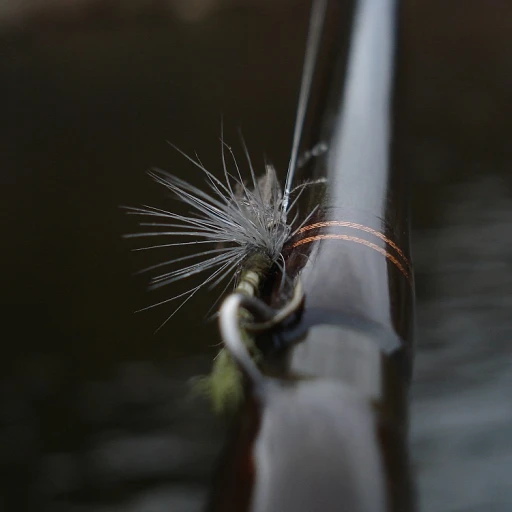
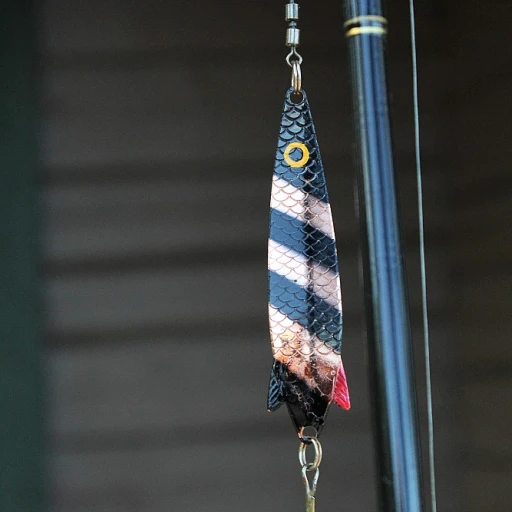


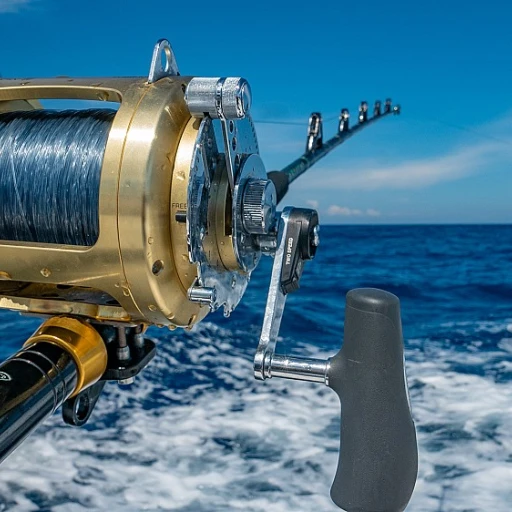


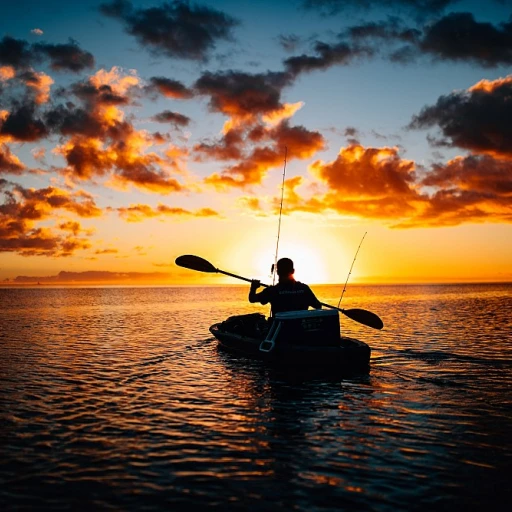
-large-teaser.webp)
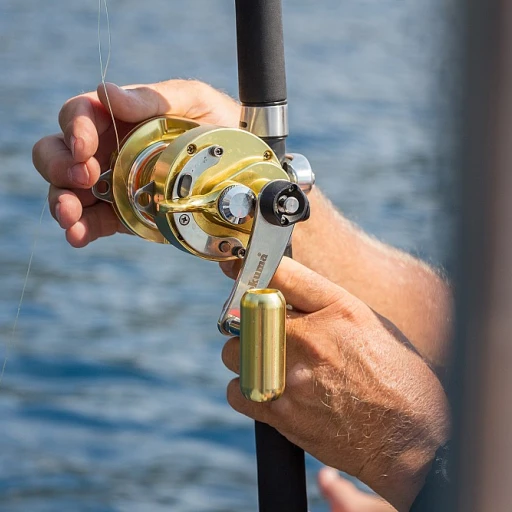

-large-teaser.webp)